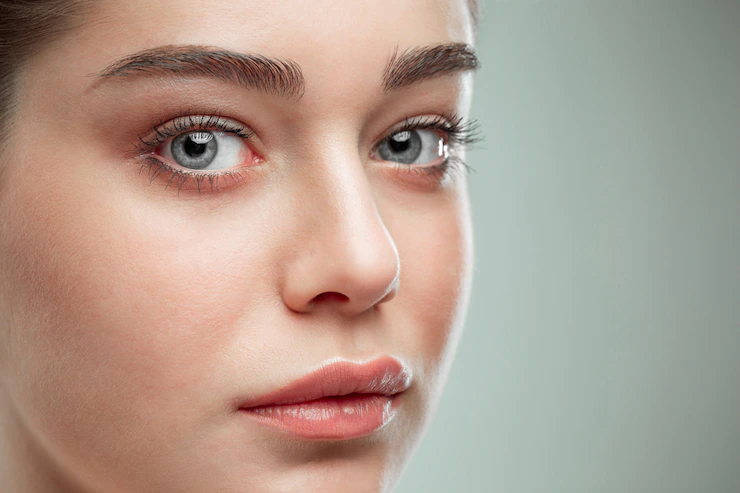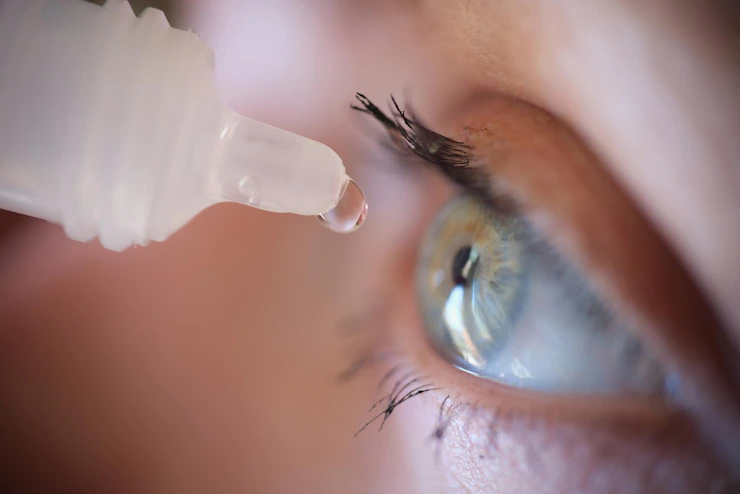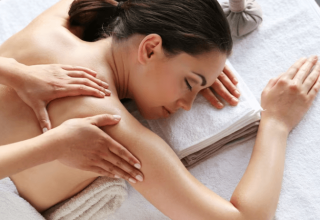Dry Eye Mask: A Quick Guide To Dry Eye Therapy
You’ve probably experienced a feeling of dryness in your eyes at some point. Perhaps you’ve been staring at screens too much or it’s just too windy. While occasional dry eyes may not be too troublesome, chronic dry eye is a completely different story.
This article shares everything you need to know about dry eyes including the potential of a dry eye therapy mask in treating dry eyes as well as other treatments.
Understanding Tears And Dry Eye

Dry eye is caused by the lack of lubrication and moisture in your eyes, which are normally produced by your tears. If something disrupts the production of your tears, you’ll start to feel dry eye symptoms.
These symptoms include:
- Irritation and redness
- Stinging or burning sensation
- Blurry vision
- Scratchy, gritty feeling or the feeling that there’s something in your eyes
- Sensitivity to light
- Excessive watering
- Strings of mucus near or in the eye
To understand more about dry eyes, let’s take a closer look at tears.
Tears coat your eyes to keep them clean and moist. The body produces three different types of tears, each having different compositions.
1. Emotional Tears
These are what we commonly refer to when talking about tears. These tears are produced when we’re angry, sad, happy, or upset. Emotional tears are said to have extra proteins and hormones not found in other types of tears.
2. Reflex Tears
These are your ‘crying while slicing onion’ tears. Reflex tears serve as a reaction to protect your body from stimuli like fumes, chemicals, or insects that fly into your eyes. It’s also produced when vomiting, yawning, or eating spicy foods. Your reflex tears cleanse and flush your eyes.
3. Basal Tears
Basal tears are released in small quantities all the time, often when blinking, to keep your eyes well-lubricated and nourished all the time. Your basal tears are the most affected by dry eye disease.
The tear film is broken down into three layers:
- Inner mucous layer responsible for keeping tears in your eye
- Watery middle layer to keep your eye moist and clean
- The outer oily layer stops evaporation and ensures smooth blinking
In terms of dry eyes, it’s the outer oily layer, which is produced by the meibomian glands, that’s often compromised and causes the symptoms of dry eyes.
Fortunately, most cases of dry eyes can be treated.
Eye Masks: Potential Treatment For Dry Eyes?

When talking about an eye mask, most people imagine the masks used at night or when sleeping. Masking your eyes not only helps you sleep better but may also help treat dry eye symptoms.
How eye masks ease symptoms of dry eye will depend on the type of masks.
Related Resource: How Droopy Eyelid Surgery Can Restore Your Vision
1. Heated Eye Masks
Heated eye masks gently melt and loosen any solidified oil in your meibomian glands. As a result, it allows for better oil production, reducing tear evaporation and discomfort from dry eyes.
You can find two kinds of heated eye masks. One is the microwave heated eye mask which you place in a microwave to heat at a certain temperature. The other is a self-heating eye mask, which is quick and easy to use. Most self-heating masks feature warming wafers that heat up once exposed to air.
2. Cooling Eye Masks
Cooling eye masks are also used to treat dry eyes. This mask helps ease the discomfort associated with digital eye strain and allergies, both of which contribute to dry eyes.
3. Sleeping Masks
Even your ordinary sleep mask can be effective in easing symptoms of dry eyes. They help protect your eyes from the environment as you sleep. Sleeping masks also help in trapping moisture in your eyes, consequently improving eye hydration.
Do They Actually Work? Is There A Safety Risk?
Eye masks, particularly heated eye masks, can help in easing dry eye symptoms. According to a study, eye masks heated at a temperature ranging from 32 ºC to 45 ºC help in treating meibomian gland dysfunction (MGD).
Achieving this temperature range can be difficult. There’s a difference between the heat you apply to your eyelid surface and the meibomian gland’s location. Also, applying high temperatures to your outer eyelid can cause skin damage.
However, it’s possible to reach the desired temperature with specific heated eye masks. It’s recommended to visit a medical professional for this treatment. But you can also use a heated eye mask at home for 10-15 minutes a day as a supplemental therapy for treating mild-to-moderate dry eye symptoms.
Alternative Dry Eye Treatment Options:

In addition to eye masks, there are other effective dry eye treatment options you can try. These include:
1. OTC Drugs
Over-the-counter (OTC) eye drops or artificial tears are one of the most effective ways to treat dry eyes. The right eye drops medications help in increasing moisture in your eyes. If you have mild or moderate symptoms, artificial tears should be enough. However, you’ll need to apply it several times a day.
In addition to eye drops, OTC eye ointments may also be used. Ointments coat your eyes better than regular eye drops. However, they tend to make your vision cloudy. Thus, they’re best used right before bedtime.
2. Prescription Medications
Your healthcare provider may prescribe a specific medication to treat your chronic dry eye. These can be taken orally or as prescription eye drops. Most of these drugs contain antibiotics that help reduce inflammation of your eyelids or stimulate oil production.
3. Eye Inserts
Eye inserts are small, clear tubes of medication, like a rice grain. They are applied to your eyes like contacts and placed between your lower eyelid and eyeball. The medicine is released slowly throughout the day, keeping your eye moist.
4. Procedure
If your dry eyes get too uncomfortable, your doctor may recommend some procedures. These may include:
- Partially or completely closing the tear ducts
- Clearing blocked oil glands via thermal pulsation
- Wearing special contacts known as bandages or scleral contact lenses
Takeaway
The progressive condition of chronic dry eyes goes beyond occasional dry eyes. But you don’t have to put up with the discomfort. By now, you know that using certain masks can help ease dry eye symptoms. You may also incorporate any of the above treatments, so you don’t have to suffer from dry eyes.
If symptoms persist, it’s best to have your doctor check the underlying cause of your dry eyes and provide the most appropriate treatment.
Read Also:
- Top Natural Treatment For Black Eyes
- 5 Best Beauty Tips for Women to Make a Fabulous look
- Symptoms of Nursing Home Abuse: What to Keep an Eye Out For



